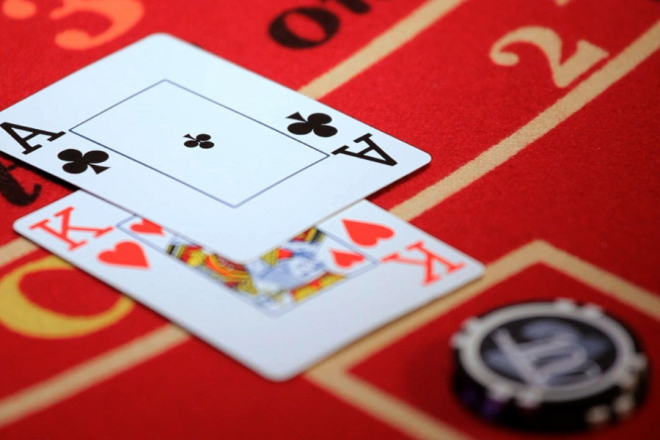
February 04, 2023
If you’ve been dealt a bad two-card hand by the blackjack dealer and you’re fearing a losing hand, you might be surprised to find that all is not lost. If you play at a blackjack table that offers surrender, you just might be able to salvage part of your initial stake.
Did you know, you can fold your blackjack hand after being dealt the first two cards? This is a damage limitation blackjack strategy. At any leading online casino blackjack surrender will be allowed, giving you the freedom to admit defeat with your hand – but only when the time is right.
What is blackjack surrender and how can you use it to your advantage? First and foremost, this rule is an optional one, so it’s important to check if our blackjack tables offer surrender first.
The premise of blackjack surrender is that you surrender half of your original wager, having seen your first two cards and the dealer’s upcard. The general rule of thumb is that if your hand has a less-than-50% chance of winning, surrender could be a credible option.
Blackjack surrender is a popular technique used by savvy bettors looking to curb their losses when the cards don’t go in their favour. There are two types of blackjack surrender techniques – total dependent and composition dependent.
In this article, we’ll look at the basic total dependent approach to surrender in blackjack. This explicitly focuses on the total of your first two cards. Composition dependent surrender techniques are reserved for the most experienced blackjack players. Seasoned players are more likely to want to base their surrender decisions based on the ‘groups’ of cards in play and those remaining in the deck.
There are two common types of blackjack surrender – early surrender and late surrender. It depends on the rules of the table which type of surrender you’re offered.
At a European or Asian online casino blackjack surrender options will usually be ‘early surrender’. Early surrender empowers you to surrender your hand at any stage of the betting round.
On the flip side, in North America, online casino blackjack surrender is often known as ‘late surrender’. Late surrender gives you the option to forfeit your hand and half of your initial stake after the dealer has checked their cards for blackjack. Therefore, late surrender is only offered if the dealer’s upcard is an ace or ten.
Using a basic strategy blackjack chart surrender is usually included on the grid to explain the hand values that make a surrender worthwhile. We’ve taken the most common hand values and scenarios from a blackjack strategy chart with surrender shown to make life easier for you:
In a land-based casino, if you wish to surrender your blackjack hand, run your index finger behind your initial bet on the table. The dealer will then return half of your stake to you and remove your cards from play. At an online casino, all you need to do is click the ‘Surrender’ button whenever the scenario merits a surrender rather than a hit, stand, split or double down.
Casinos differ in their use of blackjack surrender. Some will offer ‘early surrender’ and others will provide ‘late surrender’. Early surrender allows you to give up your hand at any point of the game. Late surrender only permits you to surrender your hand once the dealer has checked their own hand for blackjack.
A blackjack surrender is most profitable for your bankroll long-term when the dealer’s upcard is nine, ten or ace and your initial hand is worth 16 or 15. Statistically, you are more likely to bust your hand by taking a third card and the dealer is much more likely to beat your hand based on the value of their upcard.